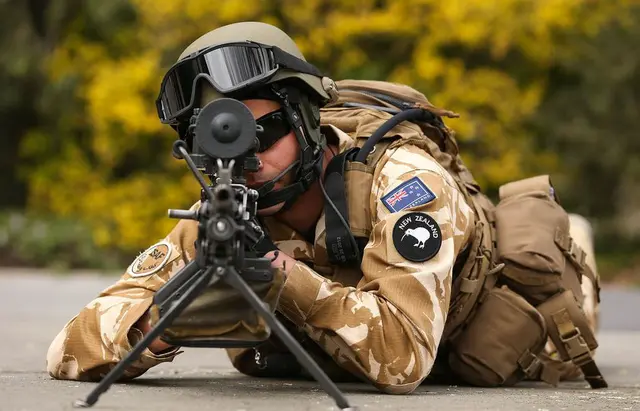The New Zealand government Wednesday unveiled details of a major military spending program to align its forces' capabilities with those of Australia and other defense partners.
The Defence Capability Plan 2016 detailed spending of 20 billion NZ dollars (14.19 billion U.S. dollars) on the New Zealand Defence Force (NZDF) out to 2030 equal to 1 percent of gross domestic product each year.
The plan said New Zealand sought to maintain interoperability with Australia, so the two countries could coordinate peace and security operations in the South Pacific.
It said New Zealand's national security was "enhanced by contributing to global security efforts that support the rules based international order" so the NZDF needed capabilities that could operate as part of a coalition force.
"New Zealand must be able to contribute military capabilities that are valued by our potential coalition partners. This includes providing a combat capable joint task force, or individual force elements, able to operate in higher threat environments as part of a coalition," it said.
Other considerations included being able to maintain New Zealand's own security operations and to contribute to United Nations peace support operations.
The plan was the next step in delivering on the Defence White Paper, released in June, Defence Minister Gerry Brownlee said in a statement.
"Since then the government has agreed to the procurement of an ice-strengthened naval tanker and high mobility vehicles for the Special Air Service (special forces)," Brownlee said.
"It has also approved upgrades to the underwater surveillance capability of the P-3 Orion and has requested tenders for a littoral operations vessel."
The government would also be buying an ice-strengthened offshore patrol vessel, replacing the NZDF's maritime surveillance aircraft in the 2020s, and cyber protection and support capability for deployed forces.
Other major investments included replacing the navy's two frigates with modern combat vessels and new transport aircraft to replace the C-130 and B757 fleets.
It also outlined "rolling purchases of modern weapons and protective equipment."
"For New Zealand suppliers, knowing the size and scope of capability investment opens up opportunities for partnering with other contractors to provide through-life support arrangements for major assets, or to suggest niche technology solutions," said Brownlee.
(APD)
 简体中文
简体中文





